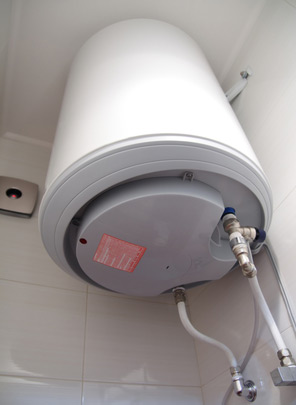This great article which follows relating to Tips on Maintaining a Water Heater is pretty much insightful. Check it out yourself and figure out what you think about it.
:max_bytes(150000):strip_icc()/tankless-hot-water-system-in-the-basement-of-a-green-technology-home-529577258-77afda16fd494c6899a78000888c3204.jpg)
Hot water is crucial for everyday convenience, whether it's for a rejuvenating shower or cleaning meals. To guarantee your warm water system runs effectively and lasts longer, normal maintenance is key. This post gives useful suggestions and understandings on how to keep your home's warm water system to stay clear of interruptions and costly repairs.
Intro
Keeping your home's hot water system may appear challenging, however with a couple of simple actions, you can ensure it operates smoothly for several years to find. This guide covers everything from recognizing your hot water system to DIY maintenance tips and knowing when to call specialist help.
Value of Maintaining Your Warm Water System
Routine maintenance not just extends the lifespan of your warm water system but likewise guarantees it runs efficiently. Overlooking maintenance can result in lowered performance, higher power costs, and even premature failure of the system.
Indicators Your Hot Water System Needs Upkeep
Knowing when your warm water system requires interest can prevent significant problems. Look out for indications such as irregular water temperature, unusual sounds from the heating system, or rusty water.
Understanding Your Hot Water System
Prior to diving right into upkeep tasks, it's practical to comprehend the fundamental components of your warm water system. Typically, this includes the water heater itself, pipelines, anode rods, and temperature controls.
Month-to-month Upkeep Tasks
Regular month-to-month checks can assist capture minor concerns before they escalate.
Flushing the Water Heater
Purging your water heater gets rid of sediment accumulation, enhancing performance and lengthening its life.
Checking and Replacing Anode Rods
Anode poles protect against deterioration inside the tank. Evaluating and replacing them when worn out is important.
Checking and Readjusting Temperature Level Settings
Adjusting the temperature setups makes sure ideal efficiency and safety and security.
Do It Yourself Tips for Maintenance
You can execute several maintenance jobs on your own to keep your warm water system in top problem.
Looking for Leakages
Regularly check pipes and connections for leakages, as these can bring about water damages and higher costs.
Testing Pressure Alleviation Valves
Examining the stress safety valve ensures it works correctly and protects against excessive pressure build-up.
Protecting Pipelines
Insulating warm water pipelines lowers warmth loss and can save power.
When to Call a Specialist
While do it yourself upkeep is valuable, some concerns call for expert proficiency.
Complex Concerns Requiring Expert Aid
Examples consist of major leakages, electrical problems, or if your hot water heater is continually underperforming.
Routine Professional Maintenance Conveniences
Specialist upkeep can consist of comprehensive assessments, tune-ups, and making sure compliance with safety and security standards.
Conclusion
Routine maintenance of your home's hot water system is vital for efficiency, longevity, and expense financial savings. By adhering to these ideas and knowing when to seek professional help, you can ensure a trustworthy supply of hot water without unexpected disturbances.
How to Maintain an Instant Hot Water Heater
Before tinkering with your hot water heater, make sure that it’s not powered on. You also have to turn off the main circuit breaker and shut off the main gas line to prevent accidents. Also turn off the water valves connected to your unit to prevent water from flowing into and out of the appliance. 2. When you’re done, you have to detach the purge valves’ caps. These look like the letter “T†and are situated on either side of the water valves. Doing so will release any pressure that has accumulated inside the valves while at the same time avoid hot water from shooting out and burning your skin. 3. When the purge valves’ caps are removed, you have to connect your hosing lines to the valves. Your unit should have come with three hoses but if it didn’t, you can purchase these things from any hardware or home repair shops. You can also get them from retail stores that sell water heating systems. Read the user’s manual and follow it to complete this task properly. When the hosing lines are connected, open the purge port’s valves. 4. You should never use harsh chemical cleaners or solutions when cleaning your unit. Make use of white vinegar instead. It should be undiluted and you’ll probably use about 2 gallons. 5. Now flush your water heater. This task should probably take about 40 minutes. We can’t give you specific directions for this because the procedure is carried out depending on the type, model and brand of your heater. With that being said, refer to the user’s manual. 6. When you’re done draining the unit, you have to turn off the purge port valves again. Remove the hosing lines that you earlier installed on each of the water valves. Put the valve caps (purge port) back in their respective places and be very careful so as not to damage the rubber discs that are found inside these caps. 7. Now that everything’s back in place, check your user’s manual again to find out how to reactivate your water heating system. 8. Once it is working, turn one of your hot water faucets on just to let air pass through the heater’s water supply pipes. Leave the tap on until water flows smoothly out of it. https://www.orrplumbing.com/blog/2014/september/how-to-maintain-an-instant-hot-water-heater/

I'm just very fascinated with Tips For Maintaining Your Hot Water Heater and I'm hoping you enjoyed the blog entry. So long as you appreciated our blog post please be sure to pass it around. I truly appreciate your readership.
Click Here